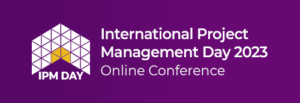By Jaclyn Gole
September 27, 2023
The SMART acronym is a popular way to formulate personal and professional goals – and it works! SMART stands for specific, measurable, achievable, relevant and timebound. With all these factors accounted for in your goal, you will be well prepared to achieve it. As you set out on a goal-setting endeavor, it’s helpful to understand why each attribute of SMART is important and how to stay motivated for the duration of your goal.
Let’s first make the distinction between goals and intentions. Sometimes people intertwine the two, but the difference is that intentions are broad, and goals focus on a concrete end-result. If you think you’re setting a goal but you’re really setting an intention, you may not get the results you hope for. Intentions are powerful; I think of them as the road you proclaim to travel on. Living a healthy lifestyle, the digital transformation, harnessing the power of AI, for example. Goals, on the other hand, are the vehicles that move you forward on this metaphorical road of your intention, such as finishing a project by year end, onboard a new technology tool in your organization, bring your blood pressure down to a healthy range. Intentions are your aim, direction, and purpose. Goals are strides to realize your overall intention through action.
The first two attributes of a SMART Goal – specific and measurable – declare a tangible end-result and precise focus. Here we identify what exactly needs to be accomplished or changed and how progress and success will be tracked and measured. A goal that is highly specific and clearly measurable will remain quantifiable and objective, and thereby less personal. The practices of self-awareness and emotional intelligence teach us that our personal thoughts and beliefs may not always be the most constructive or productive. To achieve a goal, we need to begin with a specific end in mind and allow data and facts, and the possibility of growing beyond our current state to be our guides. We cannot let unhelpful or distorted thoughts, feelings and beliefs be what pushes us forward. Rather, we need to let the desired outcome pull us in the direction we want to go and navigate accordingly.
Once a goal is defined, we need to ensure the goal is achievable. Decide the plan, actions, tasks, and decisions needed to accomplish the goal and track these steps in an appropriate tool. The plan should be practical and attainable, so you’re more likely to stick with it. It’s great to have a stretch goal, or a lofty ambitious goal, but in order to succeed the steps need to be realistic and maintainable, something you can really do, even if it’s small. It’s time for a reality check; start with where you are now and take small, faithful steps towards your goal. For some, it can be hard to accept where you are now if it’s not exactly where you want to or thought you would be at this point in your life or career. You may want the glory of running a marathon, for example, but never raced a 5K. Remember to take personal feelings and judgement out of the situation and proceed with your plan anyway.
As you move forward in your action plan, the relevancy of your goal will be tested. There will be obstacles and challenges along the way, and this will reveal where your priorities and resources are out of alignment. When distractions arise, ask yourself how much value does accomplishing the goal add to your life or career? What is your “why”, your intention or reason? Recalling the importance of your goal is usually enough to remain focused. It also helps to address obstacles in a timely manner, share your goals with supportive people who will cheer you on, and set up a framework that is convenient and easy for you or your team, such as leaving your running sneakers by the door so you can easily hit the road or leave meeting free time on your calendar for deep work and training. However, there is no shame in redirecting or refining a goal if needed to stay relevant or revisiting the goal at a later time if it’s no longer a priority.
Lastly, consider the timing of your goal. As part of success criteria, a goal should be achieved within a certain timeframe. Ideally, the duration of a goal should be enough time to start a new habit, about 2-3 weeks. Finishing smaller goals on a regular basis will improve self-confidence and self-reliance and you will feel like you can do anything you set your mind to! Delivering consistently builds trust from others as well. Timebound goals allow you to hold yourself accountable and maintain traction. If there is no timeline, there will be no sense of urgency or heathy stress to keep the momentum going. It’s best not to stretch too much with regards to time because you can always set a new SMART goal after the established time period ends.
Even the most well composed, articulated SMART goals that exemplify all the aspects we’ve covered require discipline to stick with them. Understanding motivation is advantageous in adhering to your goals. There are 2 types of motivation. Intrinsic motivation is an incentive to engage in an activity derived from pleasure and genuine interest rather than an external benefit. Extrinsic motivation is an incentive to engage in an activity based on an external factor, usually to avoid punishment or receive a reward. Both types of motivation have advantages when harnessed authentically. Take time to reflect on what your motivating factors are – not what is trendy or what you think you should be doing, but what genuinely motivates you and your organization. Is it more money, an award or recognition, the exhilarating feelings of accomplishment and joy? As you set personal, professional and company goals, be honest with yourself, and make sure your goals truly align with your intrinsic and extrinsic motivating factors and this will ensure the goals are most relevant and achievable for you.
One of life’s greatest ironies is that despite our best goals and intentions, there are many things in life and at work that are out of our control. The only thing we truly have control over is where we direct our energy. While success is not guaranteed, I encourage you to “Shoot for the moon. Even if you miss, you’ll land among the stars”. While I truly hope we all achieve our exact goals, as long as we execute with our best efforts and “leave it all on the floor” so to speak, we will land among the stars no matter what. It is already a huge accomplishment in itself to set an intention, set course on a goal, and try to improve yourself and the life of others through your work and being your best self. Challenges are inevitable, motivation requires self-awareness, and willpower and discipline take practice. It’s not easy, but it’s a rewarding, fulfilling and enriching way to live life. Take pride in yourself, your team, and your organization for setting a goal and sticking to it!
I wish you the best of luck and lots of success in your goals ahead!
Jaclyn is presenting at this year’s International Project Management Day! Register here.
Disclaimer: The ideas, views, and opinions expressed in this article are those of the author and do not necessarily reflect the views of International Institute for Learning or any entities they represent.



